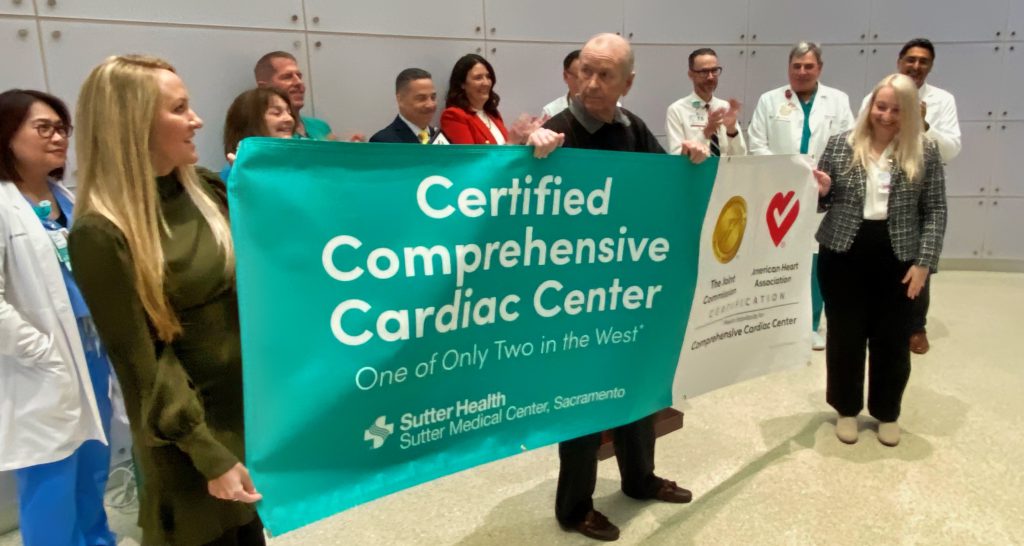An original version of this article appeared in California Works, an article series hosted by the California Chamber of Commerce, November 2023.
Dwindling access to health care is a nationwide issue with a big impact on California, and it is proving to be one of the toughest and most significant health policy issues we face. California has made great strides toward helping get most people access to health insurance; however, getting a timely appointment or receiving the right care at the right place and time remains a challenge for many.
As one of California’s largest health systems serving more than 3.3 million patients, Sutter Health is committed to helping close the health care access gaps. When patients cannot access timely primary care services or can only access a hospital for simple or routine procedures, it can have a negative impact on individual health outcomes and contribute to the escalating costs of care. That is why Sutter Health is ramping up investments to help alleviate this challenge: addressing the critical health care clinician shortage, increasing the number of ambulatory care centers, supporting the California state ballot initiative Proposition 1 to increase funding for mental healthcare services and providers, and bolstering Federally Qualified Health Care Centers.
Increasing the clinical workforce pipeline
One of the significant factors contributing to the access problem is a growing shortage of clinicians, nurses and other health care workers. As a result, patients experience delays in scheduling appointments or getting timely access to primary care, key specialty care services and mental health care providers. According to U.S. Health Resources and Services Administration (HRSA) more than 8 million people in California* live in an area that has a shortage of primary care providers. A mid-range forecast by Let’s Get Healthy California indicates the state would need about 4,700 additional primary care clinicians in 2025 and about 4,100 additional primary care clinicians in 2030 to meet demand.
It is clear California needs a more robust pipeline of clinical talent to bridge the widening gap. California must create more residency programs to keep medical students in state and increase the likelihood they’ll stay and build their practice here. Sutter is leaning in to help solve this challenge. We are developing and implementing new graduate medical education programs across markets, expanding our GME footprint to train and graduate approximately 1,000 residents and fellows by 2030.
Sutter also understands that California’s patients and clinical needs vary widely—from small, rural communities to larger urban regions. That’s why Sutter Health offers different GME programs to meet local needs; for example, Sutter Health has a rural residency family medicine training track and another in development with an emphasis on health equity.
Sutter Health was also a strong supporter of Proposition 1, a California state ballot initiative, that will expand access to mental health and addiction care services, including funding additional mental health professionals and prioritizing housing and treatment opportunities for veterans and others with mental health needs. This is one way the health system is working to expand access to mental healthcare.
Meeting patients where they live with more care centers, better care capacity
The landscape of health care is shifting to be more responsive and convenient for patients. Sutter Health’s aim is to meet patients where they are by expanding its presence in communities across California and accelerating digital health innovation that maximizes care delivery and improves management of chronic conditions and disease. We plan to add 25 new ambulatory care centers across the Sutter footprint in the next four years and embarked on an aggressive physician and advanced practice clinician recruiting effort, hiring more than 700 in 2023 with comparable goals in the coming years.
Investing in communities to expand care and reach those in need
Sutter Health invests significantly in the health of California’s diverse communities, including those where care is often difficult to access. As a not-for-profit health system, its goals include expanding access to health care beyond the walls of its hospitals and care centers.
In 2023, Sutter invested $ $822 million in community benefit programs, which includes supporting community health partners and programs, providing free medical care to patients that cannot afford it and absorbing the unreimbursed costs of providing care to patients enrolled in Medi-Cal.
Sutter Health works with community organizations to help identify, prioritize and address key community health needs, with a specific goal of improving community wellness and serving populations experiencing health disparities. Federally Qualified Health Care Centers (FQHC) play a unique and critical role in providing patients access to comprehensive clinical services in medically underserved regions. In 2022 Sutter’s support for numerous FQHCs throughout its Northern California footprint helped 300,000 patients access primary and specialty care services and 140,000 patients access mental health and addiction care services.
Sutter Health is proud to continue to find ways to make sure every Californian can access the highest quality care in the most convenient way possible. However, the problem cannot be solved alone and that there is much more work to be done. Sutter Health looks forward to working alongside others to find new and better ways for patients and communities to improve their overall health and wellness.
*Bureau of Health Workforce, Health Resources and Services Administration (HRSA), U.S. Department of Health & Human Services. Designated Health Professional Shortage Areas Statistics. First Quarter of Fiscal Year 2024, Designated HPSA Quarterly Summary, at https://bhw.hrsa.gov/workforce-shortage-areas/shortage-designation. (visited March 1, 2024).





